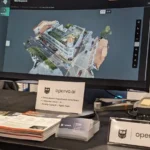In the fast-paced world of technology, change is not just constant—it’s accelerating. Consequently, entrepreneurs, investors, and leaders often find themselves navigating a labyrinth of tech trends, unsure which will shape the future and which are fleeting. Moreover, the fear of missing out on a pivotal innovation looms large, and the pressure to stay ahead is…
RELATED ARTICLES
© NewInAsia.com 2025








